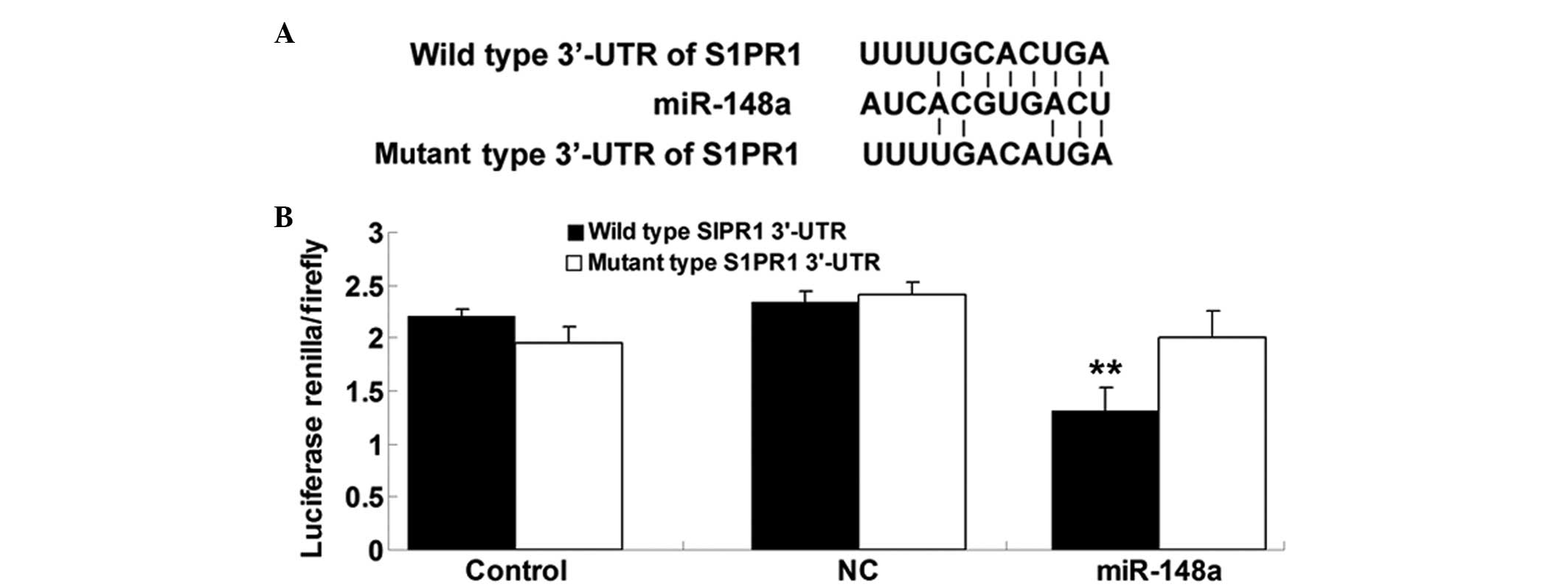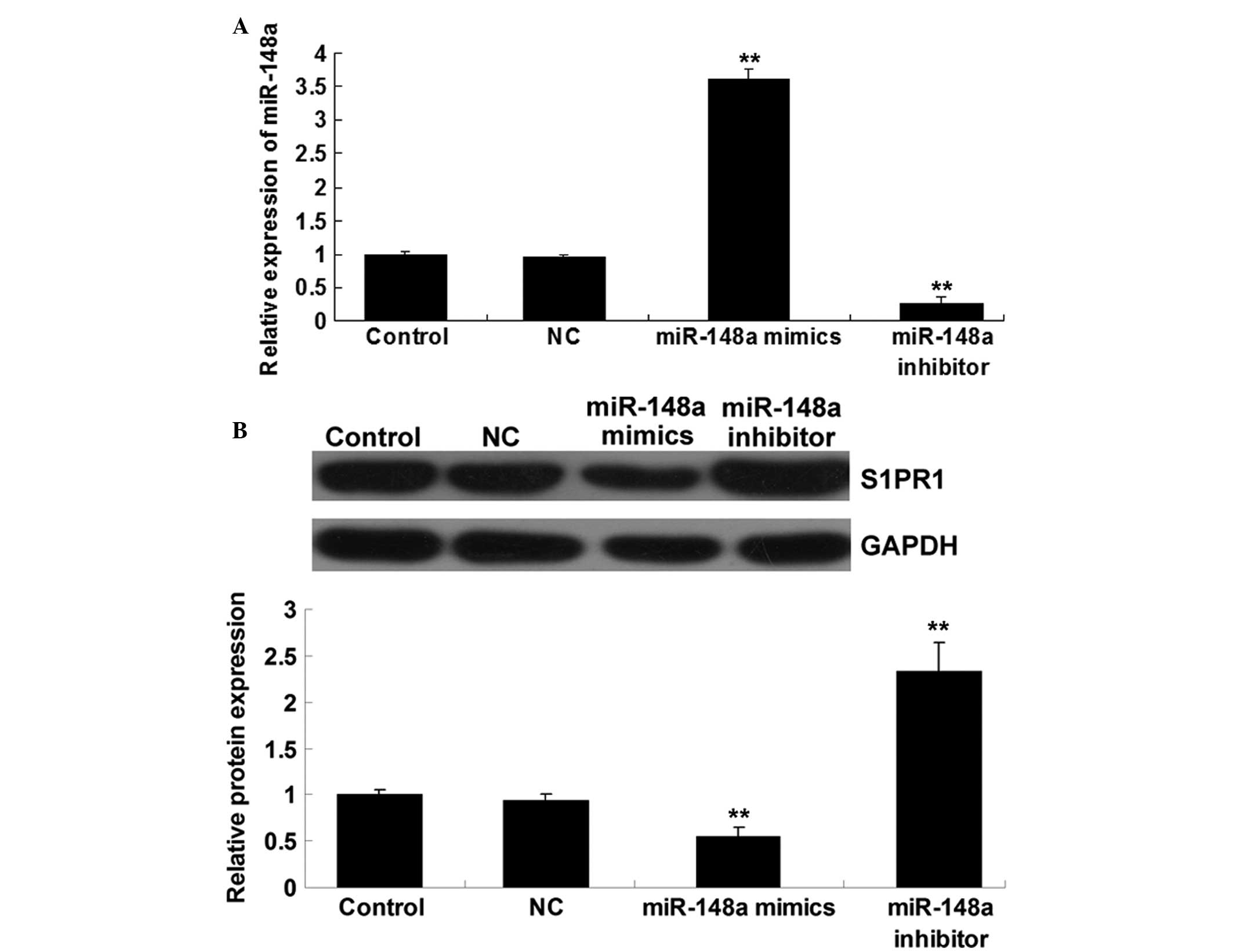|
1
|
Hung CH, Chiu YC, Chen CH and Hu TH:
MicroRNAs in hepatocellular carcinoma: carcinogenesis, progression,
and therapeutic target. Biomed Res Int. 2014:4864072014. View Article : Google Scholar : PubMed/NCBI
|
|
2
|
Callegari E, Elamin BK, Sabbioni S,
Gramantieri L and Negrini M: Role of microRNAs in hepatocellular
carcinoma: a clinical perspective. Onco Targets Ther. 6:1167–1178.
2013.PubMed/NCBI
|
|
3
|
Khare S, Zhang Q and Ibdah JA: Epigenetics
of hepatocellular carcinoma: role of microRNA. World J
Gastroenterol. 19:5439–5445. 2013. View Article : Google Scholar : PubMed/NCBI
|
|
4
|
Huang X, Liang M, Dittmar R and Wang L:
Extracellular microRNAs in urologic malignancies: chances and
challenges. Int J Mol Sci. 14:14785–14799. 2013. View Article : Google Scholar : PubMed/NCBI
|
|
5
|
Cui ZH, Shen SQ, Chen ZB and Hu C: Growth
inhibition of hepatocellular carcinoma tumor endothelial cells by
miR-204-3p and underlying mechanism. World J Gastroenterol.
20:5493–5504. 2014. View Article : Google Scholar : PubMed/NCBI
|
|
6
|
Chang RM, Yang H, Fang F, Xu JF and Yang
LY: MicroRNA-331-3p promotes proliferation and metastasis of
hepatocellular carcinoma by targeting PH domain and leucine-rich
repeat protein phosphatase. Hepatology. 60:1251–1263. 2014.
View Article : Google Scholar : PubMed/NCBI
|
|
7
|
Tsang FH, Au V, Lu WJ, et al: Prognostic
marker microRNA-125b inhibits tumorigenic properties of
hepatocellular carcinoma cells via suppressing tumorigenic molecule
eIF5A2. Dig Dis Sci. 59:2477–2487. 2014. View Article : Google Scholar : PubMed/NCBI
|
|
8
|
Zhang Z, Zheng W and Hai J: MicroRNA-148b
expression is decreased in hepatocellular carcinoma and associated
with prognosis. Med Oncol. 31:9842014. View Article : Google Scholar : PubMed/NCBI
|
|
9
|
Heo MJ, Kim YM, Koo JH, et al:
microRNA-148a dysregulation discriminates poor prognosis of
hepatocellular carcinoma in association with USP4 overexpression.
Oncotarget. 5:2792–2806. 2014.PubMed/NCBI
|
|
10
|
Xia J, Guo X, Yan J and Deng K: The role
of miR-148a in gastric cancer. J Cancer Res Clin Oncol.
140:1451–1456. 2014. View Article : Google Scholar : PubMed/NCBI
|
|
11
|
Li J, Song Y, Wang Y, Luo J and Yu W:
MicroRNA-148a suppresses epithelial-to-mesenchymal transition by
targeting ROCK1 in non-small cell lung cancer cells. Mol Cell
Biochem. 380:277–282. 2013. View Article : Google Scholar : PubMed/NCBI
|
|
12
|
Takahashi M, Cuatrecasas M, Balaguer F, et
al: The clinical significance of MiR-148a as a predictive biomarker
in patients with advanced colorectal cancer. PLoS One.
7:e466842012. View Article : Google Scholar : PubMed/NCBI
|
|
13
|
Zhang JP, Zeng C, Xu L, Gong J, Fang JH
and Zhuang SM: MicroRNA-148a suppresses the epithelial-mesenchymal
transition and metastasis of hepatoma cells by targeting Met/Snail
signaling. Oncogene. 33:4069–4076. 2014. View Article : Google Scholar
|
|
14
|
Gailhouste L, Gomez-Santos L, Hagiwara K,
et al: miR-148a plays a pivotal role in the liver by promoting the
hepatospecific phenotype and suppressing the invasiveness of
transformed cells. Hepatology. 58:1153–1165. 2013. View Article : Google Scholar : PubMed/NCBI
|
|
15
|
Ambros V: The functions of animal
microRNAs. Nature. 431:350–355. 2004. View Article : Google Scholar : PubMed/NCBI
|
|
16
|
Calin GA and Croce CM: MicroRNA signatures
in human cancers. Nat Rev Cancer. 6:857–866. 2006. View Article : Google Scholar : PubMed/NCBI
|
|
17
|
Magrelli A, Azzalin G, Salvatore M, et al:
Altered microRNA expression patterns in hepatoblastoma patients.
Transl Oncol. 2:157–163. 2009. View Article : Google Scholar : PubMed/NCBI
|
|
18
|
Yuan K, Lian Z, Sun B, Clayton MM, Ng IO
and Feitelson MA: Role of miR-148a in hepatitis B associated
hepatocellular carcinoma. PLoS One. 7:e353312012. View Article : Google Scholar : PubMed/NCBI
|
|
19
|
Selvam SP and Ogretmen B: Sphingosine
kinase/sphingosine 1-phosphate signaling in cancer therapeutics and
drug resistance. Handb Exp Pharmacol. 3–27. 2013. View Article : Google Scholar : PubMed/NCBI
|
|
20
|
Cuvillier O: Sphingosine 1-phosphate
receptors: from biology to physiopathology. Med Sci (Paris).
28:951–957. 2012.(In French). View Article : Google Scholar
|
|
21
|
Pyne NJ, Tonelli F, Lim KG, Long JS,
Edwards J and Pyne S: Sphingosine 1-phosphate signalling in cancer.
Biochem Soc Trans. 40:94–100. 2012. View Article : Google Scholar : PubMed/NCBI
|
|
22
|
Sekine Y, Suzuki K and Remaley AT: HDL and
sphingosine-1-phosphate activate stat3 in prostate cancer DU145
cells via ERK1/2 and S1P receptors, and promote cell migration and
invasion. Prostate. 71:690–699. 2011. View Article : Google Scholar
|
|
23
|
Li MH, Sanchez T, Yamase H, et al:
S1P/S1P1 signaling stimulates cell migration and invasion in Wilms
tumor. Cancer Lett. 276:171–179. 2009. View Article : Google Scholar : PubMed/NCBI
|













